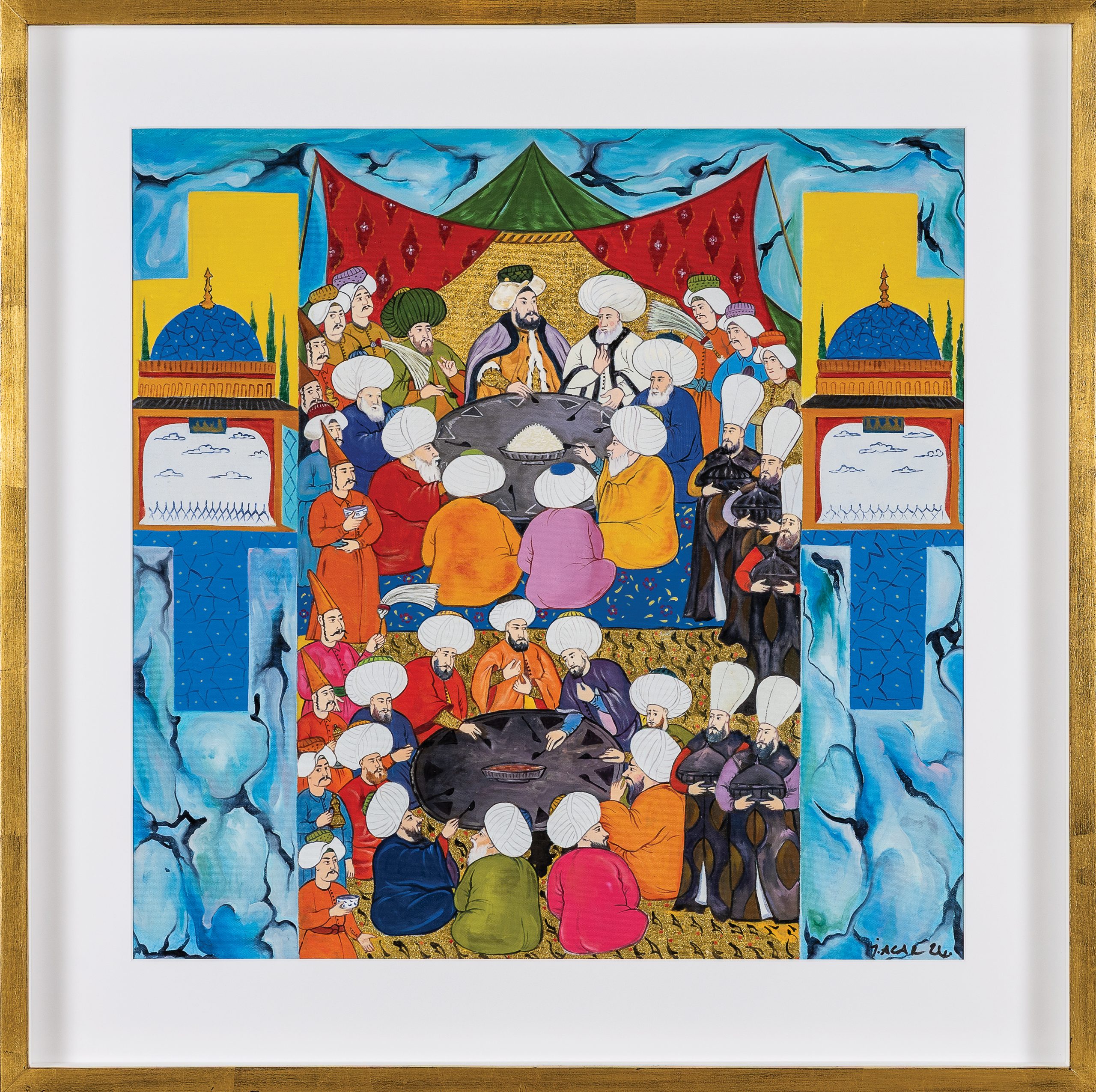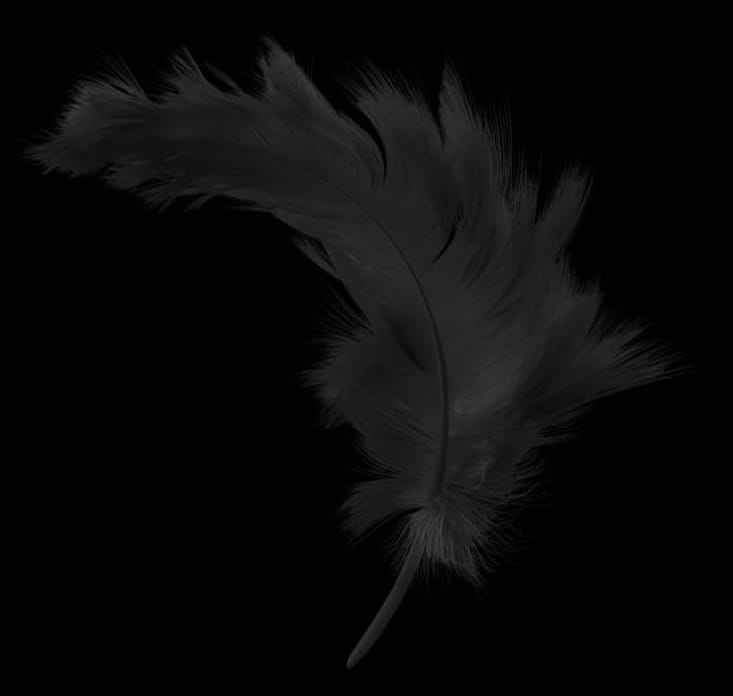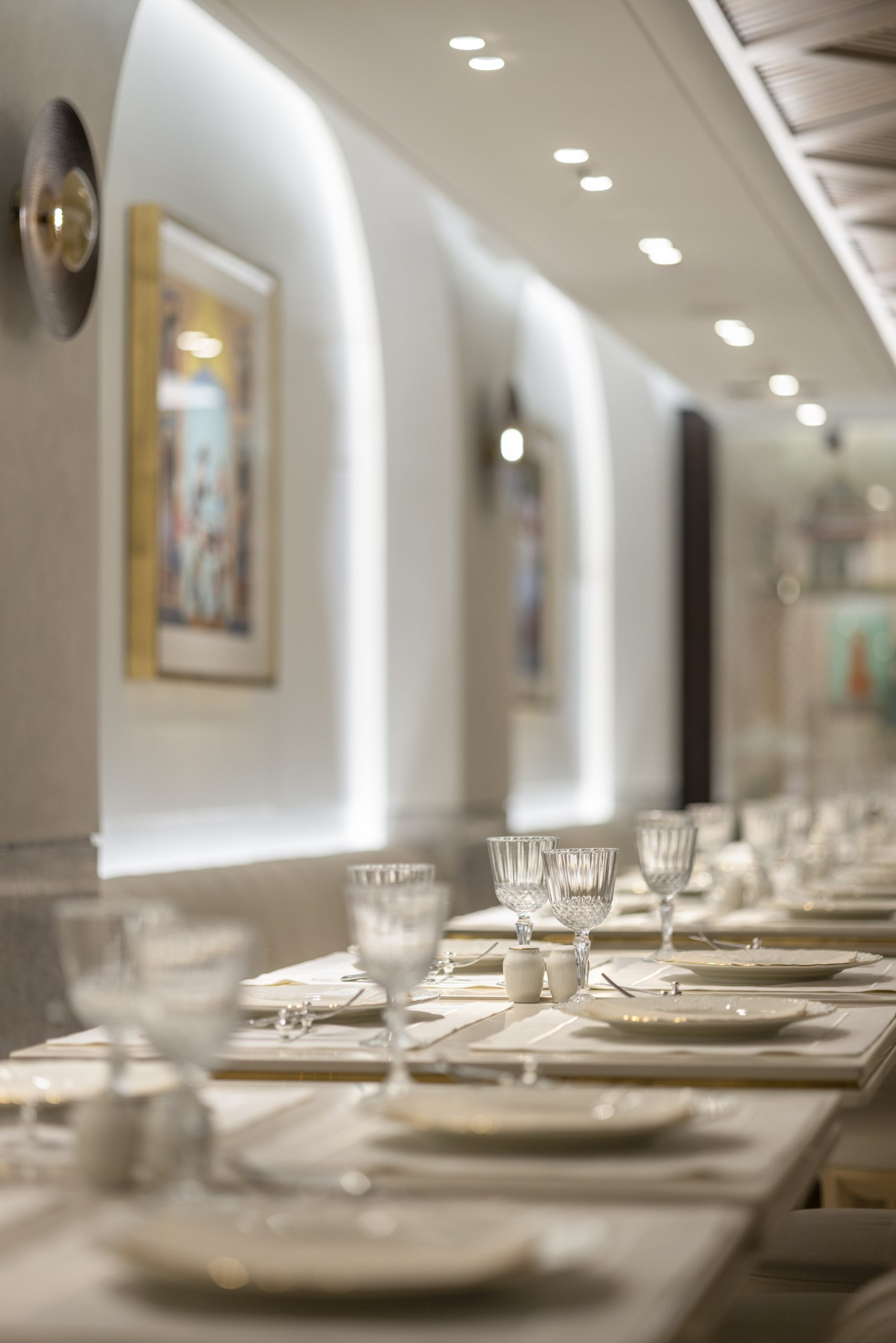
In Ottoman society, everyday practices were deeply rooted in symbolic structures that reflected identity, status, and belonging. Among the most prominent elements of this symbolic framework were plumes (sorguç), coffee rituals, and women’s headgear. Plumes, adorned with feathers or precious stones, were worn primarily by members of the palace elite and military class to indicate rank, duty, or position. These ornamental items not only visually manifested the state’s hierarchical structure but also served as instruments of representation.
Listen to the artwork in English.
Eseri Türkçe dinleyin.
Similarly, coffee culture in the Ottoman world evolved into a ritualized expression of social relations, hospitality, and refinement, far beyond being a simple beverage habit. The serving of coffee followed strict codes of propriety, silence, and moderation. In the palace, coffee ceremonies were particularly significant, involving specific roles such as the kahvecibaşı (chief coffee server) and harem women. The cup, its holder, the tray, and the manner of presentation all contributed to an aesthetic unity.
Women’s headgear, on the other hand, functioned not merely as an article of clothing but as a marker of marital status, social class, regional identity, and personal taste. There were clear distinctions between the bejeweled and feathered headpieces of palace women and the more modest coverings worn by women in the provinces. These accessories reflected how female identity was symbolized and made visible within Ottoman society.
Each of these elements provides valuable insights into the multi-layered relationship between visuality, ritual, and identity in the Ottoman cultural context.
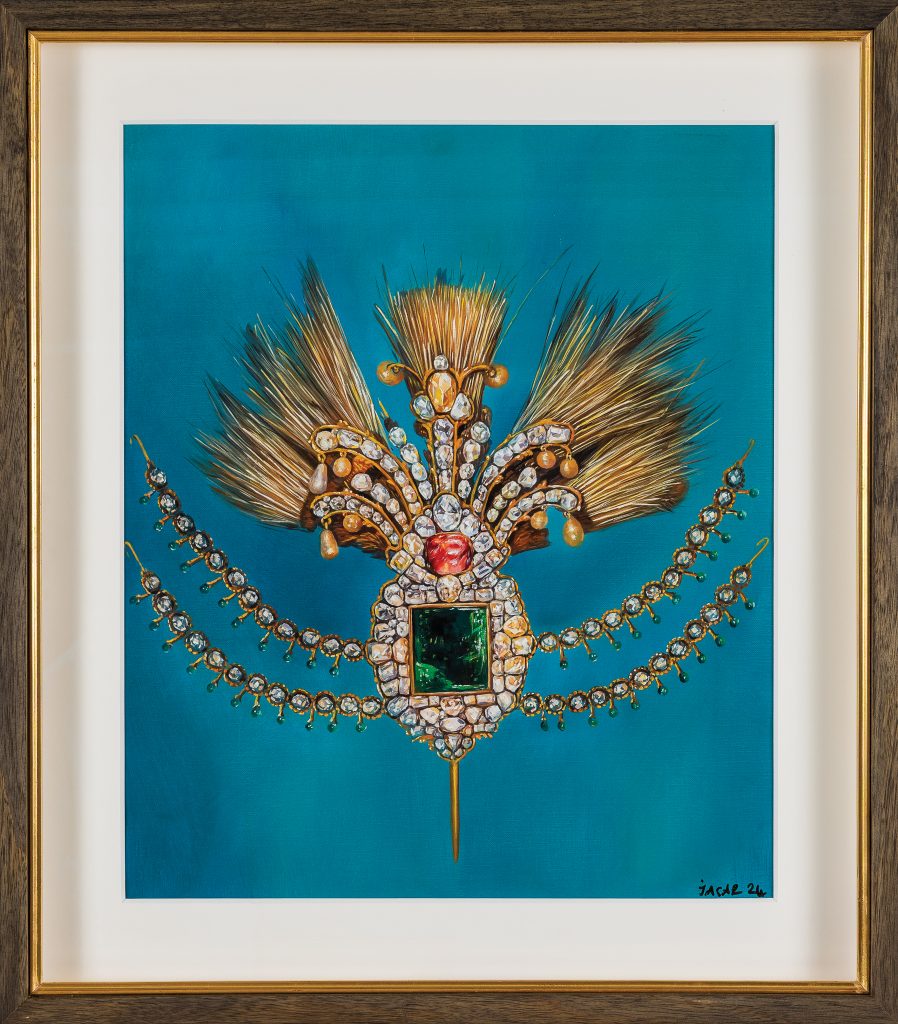
In the Ottoman Empire, the plume was a prestigious ornament worn by sultans and high-ranking state officials, symbolizing imperial grandeur and authority. Often adorned with precious stones such as gold, emeralds, rubies, pearls, and diamonds, plumes represented the finest examples of Ottoman courtly art and jewelry craftsmanship.
Listen to the artwork in English.
Eseri Türkçe dinleyin.
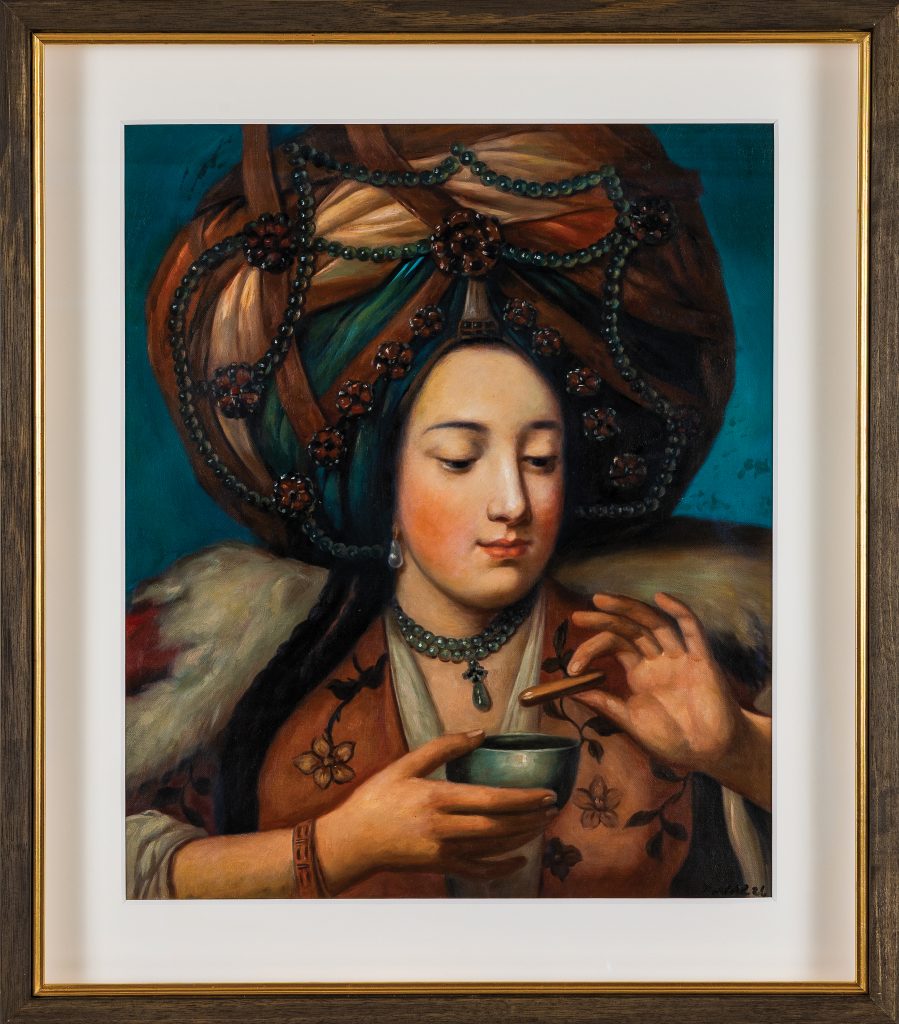
In the Ottoman Empire, coffee was more than a beverage—it was a central element of social life, courtly culture, and refined elegance. Introduced to the empire in the 16th century, coffee quickly spread throughout the land, becoming a cultural staple from royal palaces to public coffeehouses.
Listen to the artwork in English.
Eseri Türkçe dinleyin.
Within the palace, coffee held a deep-rooted tradition. For the women of the dynasty and harem concubines, drinking coffee was not merely a habit but a display of taste and grace. Coffee was served during private ceremonies, and the art of brewing it was considered a respected skill. The kahvecibaşı, or chief coffee maker, was entrusted with preparing coffee for the sultan and the women of the harem—an assignment that required great care and precision.
Coffee was typically accompanied by a selection of sweets and delicacies:
In Ottoman culture, coffee service was a symbol of hospitality, ceremonial protocol, and refined taste. Especially within the harem, coffee hours for the sultanas and royal women were cherished as moments of intimate conversation and delightful ritual.
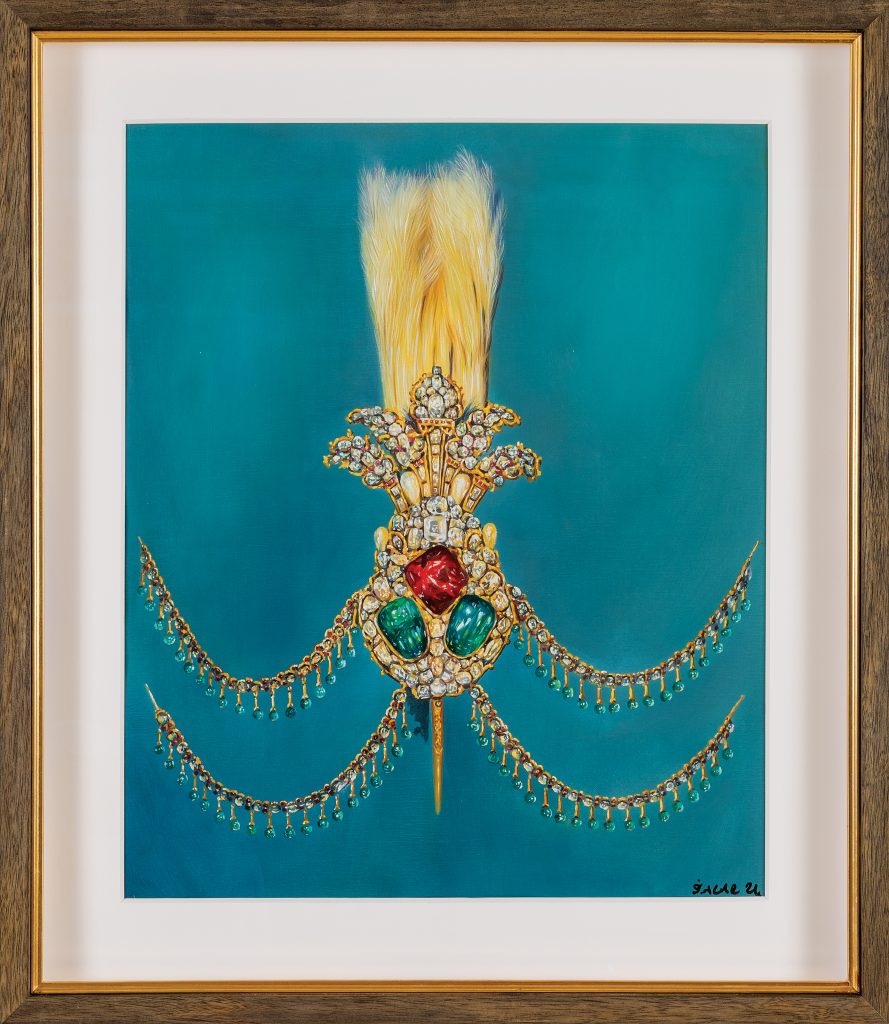
In the Ottoman Empire, women’s plumes were among the most prestigious adornments worn by female members of the royal harem—including the valide sultan (queen mother), haseki sultans (imperial consorts), and princesses. Unlike the plumes worn by men, women’s headgears were crafted with delicate artistry, reflecting refined aesthetics and the wearer’s status within the palace hierarchy.
Listen to the artwork in English.
Eseri Türkçe dinleyin.
Key Features:
Materials: Often adorned with gold, silver, pearls, emeralds, rubies, diamonds, and other precious stones.
Motifs: Commonly featured floral, leaf, feather, and fruit designs—tulips, carnations, and cypress trees being especially popular, reflecting classical Ottoman tastes.
Design: While men’s plumes were typically large and weighty, women’s were designed to be more delicate and intricately detailed.
Usage: High-ranking women wore more elaborate plumes during ceremonies, weddings, and formal events, while simpler versions were used for daily wear.
Power and Prestige: A plume was more than a piece of jewelry; it was a symbol of power, elegance, and elite status. Valide sultans were known to wear particularly grand and ornate plumes.
Women’s plumes served not only as symbols of beauty but also as visual markers of social rank and prestige, making them indispensable elements of Ottoman court culture.
